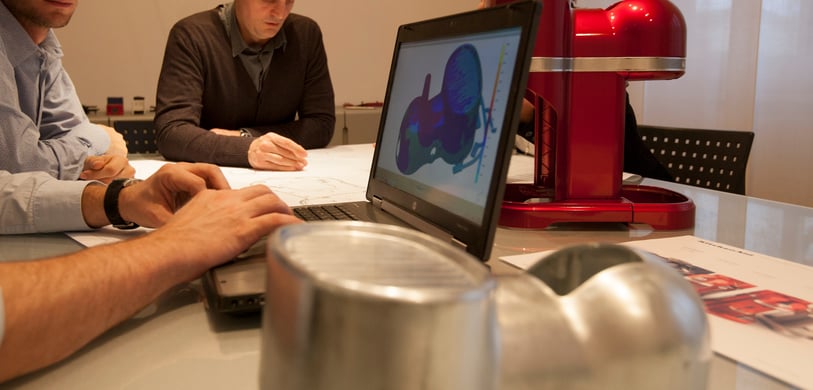As winner of numerous international awards, Bruschi Spa is known for its innovative approach in design and technology. We are glad to share our insights and experiences with the industry members.
How Zamak Die Casters can improve your product quality
Zamak die casters cannot be choose without a mindful analysis. Choosing the right supplier can be a tough issue: it is fundamental that zamak die casters are able to understand if die casting is the right choice for the production of the component requested, or instead advice the client to use another technology.
The importance of zamak die casters to improve product quality
Die casters can provide different services: in a wide range of die casting services co-design is one of the most important ones.
Which are co-design benefits?
Co-Design is a service provided by zamak die casters. It is a really important phase during product design process when the designer and the client work together to obtain a better product. The product or component must be not only improved for technical requirements, but also in a cost and time saving way.
If co-design phase is incomplete, the risk is that the client will face some difficulties not consulting the supplier. These problems could be related to the process of die casting and in this case the product will not reach technical requirements.
If co-design phase is absent, the risk is to have a product that is difficult to be produced or really expensive due to irrelevant geometry for the client such as small sign or strict tolerances. In this case is important to contact the supplier before the development of the project or cycle design.
Probably the most important part of co-design phase is the established relationship between the designer and its customer. It is a collaboration based on sharing information and know-how to optimize the entire process.
From this collaboration the result obtained is a better product, moreover trust and synergy between the two parts involved in the process. Collaboration between the two parts involved, the zamak die caster and the clients, is what makes the difference in terms of quality and satisfaction.
Co-design: optimizing products or components
Co-design service can be used either for the creation of a new product or for the optimization and improving of an already existing one.
Regarding the optimization or improving is important that during the analysis of issues for the product is used a scientific approach that widens the morphology of the problem and its principal causes.
The first step concern the observation of the problem and its identification, through the use of tools such as microscope, chemical analysis and in general destructive or non-destructive evaluation methods.
First of all the experience of the specialist in this subject is a fundamental aspect, then is also important the study of the existing literature about this topic.
Secondly the research of principal causes starts with the identification of process phase where issues take place. This phase continues among analytical method where the specialist underlines possible causes and consequently excludes them.
The right zamak die caster has valid tools to analyze possible issues of the already existing product or components during the casting process.
Co-design process
There are different steps of co-design process:
- Knowing the technological process of moulds building
- Experience of the designer in similar problems
- Prototyping with CAD/CAE of tools such as moulds, shearing machines and cooling systems
- Numerical simulations of die casting process
- Rapid prototyping with pilot tools
Numerical simulations of die casting process
During this study is possible to analyze physical phenomenon and use numerical algorithm to describe how a system responds.
It is used in different co-design phases, but the most important thing is that is considered a valid tool to analyze the correct geometry of a product.
It is important to say that, during co-design phase, is possible to modify the geometry of the component to optimize the filling. Moreover is possible to study the thermal conditions of moulds and analyze issues linked to solidification phase.
In addition to that with simulation, using specific software like MAGMASOFT, is possible to avoid structural or aesthetic defects such as shrinkage porosity, lakes, deformations and residual stress.
Click here to get more info about Simulation
To obtain realistic simulations, the specialist has to diagnose the already existing mould to find the right conditions and to characterize better the system. If this phase is incomplete or absent the specialist is lead to be concentrated on optimizing problems, making a useless effort.
Numerical simulation can be also used to study phases that occurs after die casting process such as ejection, cooling and cutting of overflows and runners.
Rapid prototyping with pilot tools
Pilot tools are useful to anticipate the outcome of product finished. With pilot tools critical point and defects can be analyzed in advance and can be modified operating on moulds geometry or on design of the product.
The pilot tool allows to obtain samples to be used in the following phases after die casting widening the optimization of the entire technology process.
To be updated on trends and innovations in Zinc Die Casting Industry, you are welcome to subscribe to our blog.


